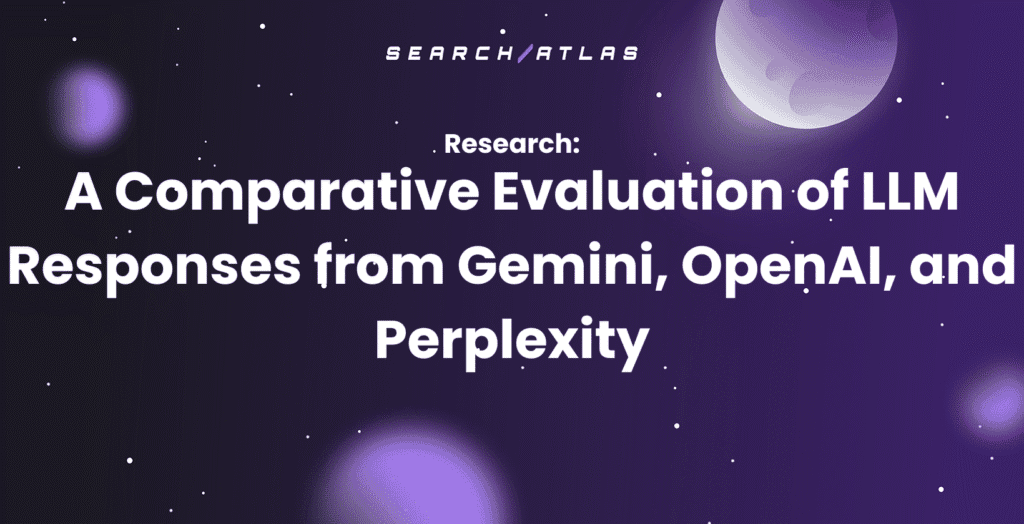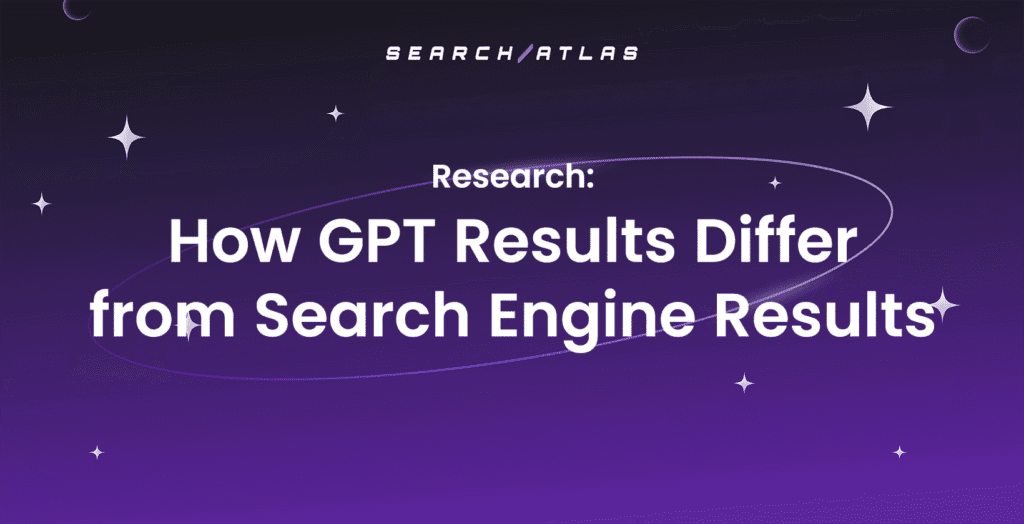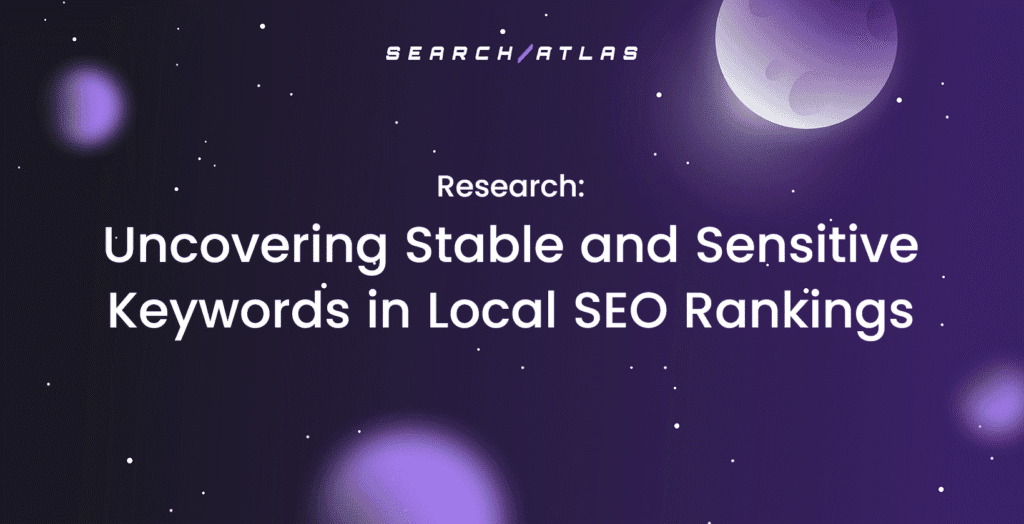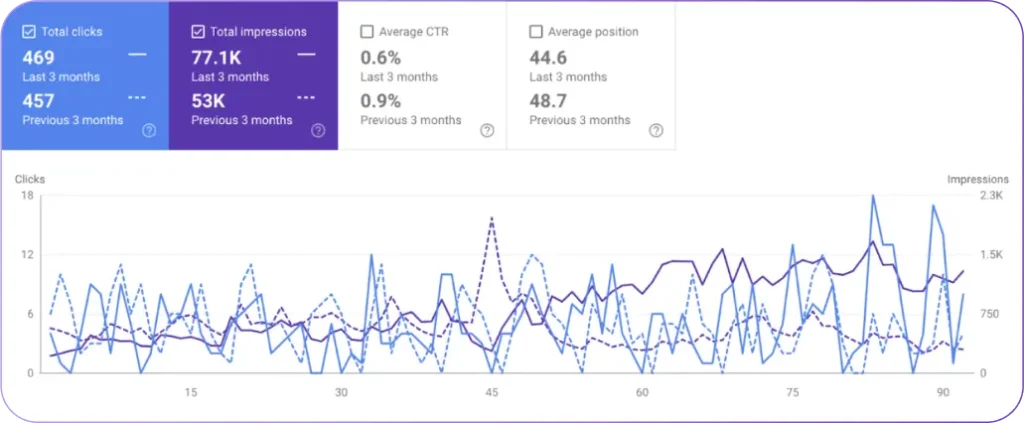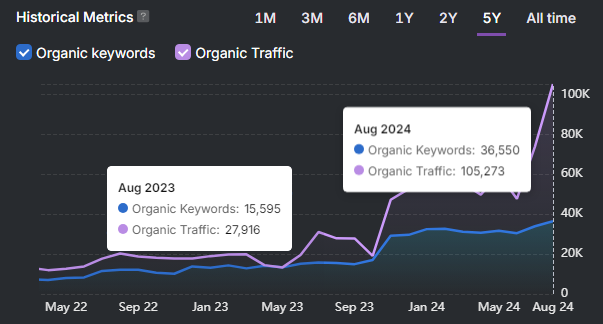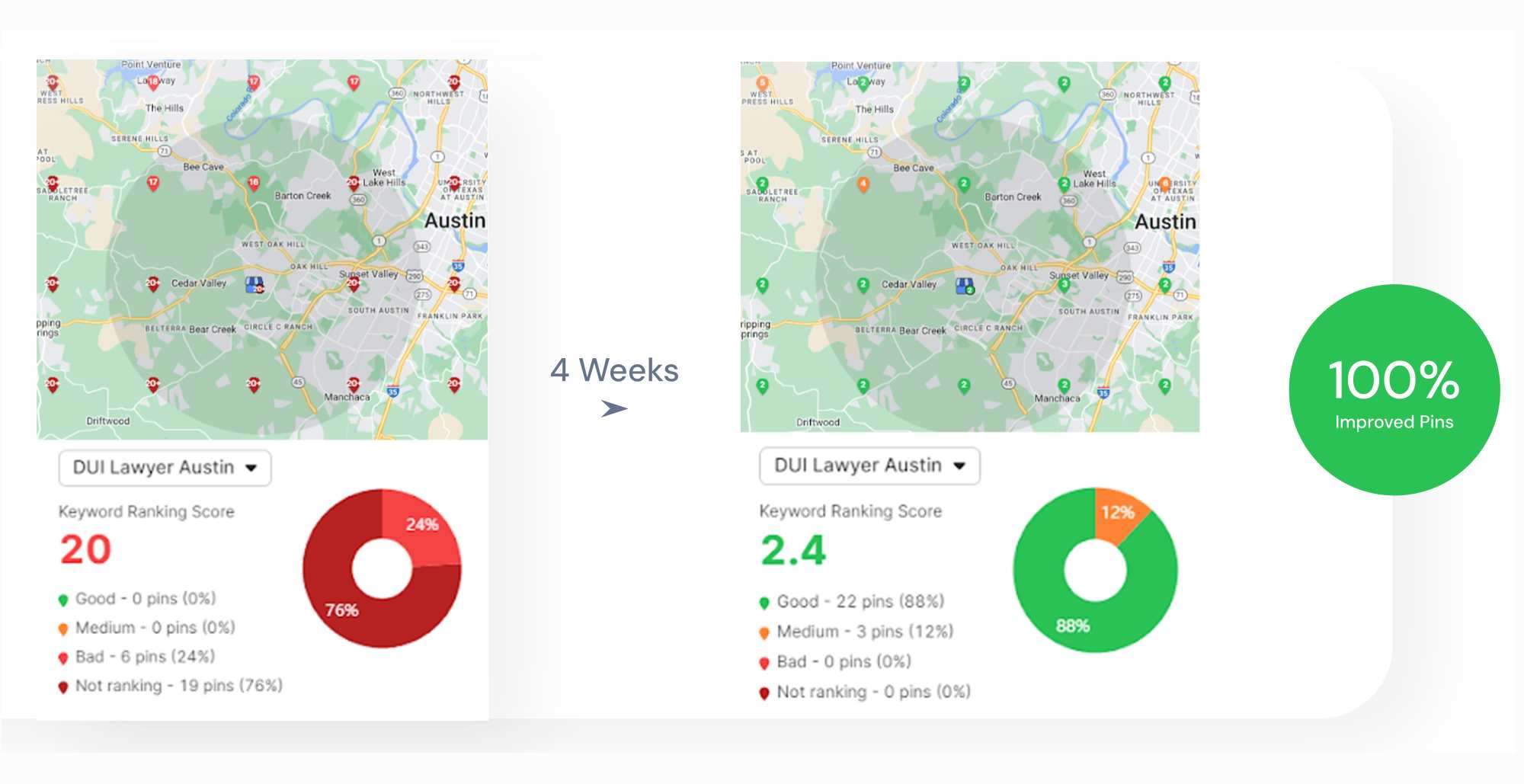You may also read a concise version of this research in our blog: Authority Metrics in the Age of LLMs: Visibility Correlation Analysis
Introduction
This study examines whether established SEO authority metrics such as Domain Power (DP), Domain Rating (DR), and Domain Authority (DA) influence how often large language models (LLMs) cite or surface a domain in their responses. By comparing these metrics with the LLM Visibility Score (which measures how frequently and prominently domains appear in LLM outputs), we aim to determine whether higher-authority sites continue to dominate in the AI-driven search ecosystem.
Generally, the data shows that Domain Power, Domain Rating, and Domain Authority are not strong predictors of LLM Visibility. In fact, we observe slightly negative correlations with both visibility and win rate.
We define win rate as the proportion of times a domain achieved the top position (visibility score = 100) across all query responses in which it appeared.
Methodology
Data Range & Scope:
We collected LLM domain response and citation data between 2025-08-25 and 2025-10-24, capturing domain visibility in large language model (LLM) outputs.
Filtering:
- For the DP, DR, and DA vs. Visibility Score analysis, only rows where visibility_score > 0 were included. This isolates meaningful LLM citations with measurable visibility and excludes domains that appeared with no visibility impact.
- For the Lower Co-Mention Frequency analysis and Google/YouTube Case Studies, the full dataset was used, including rows with visibility_score = 0, to capture both visible and non-visible domain appearances.
Integration:
Domain-level metrics (Domain Power, Domain Rating, and Domain Authority) were joined with the visibility dataset to assess how SEO authority metrics relate to LLM citation frequency and prominence.
Below is a chart showing the correlation between traditional domain authority metrics (Domain Power, Domain Rating, and Domain Authority) and LLM performance indicators such as Average Visibility Score and Win Rate.
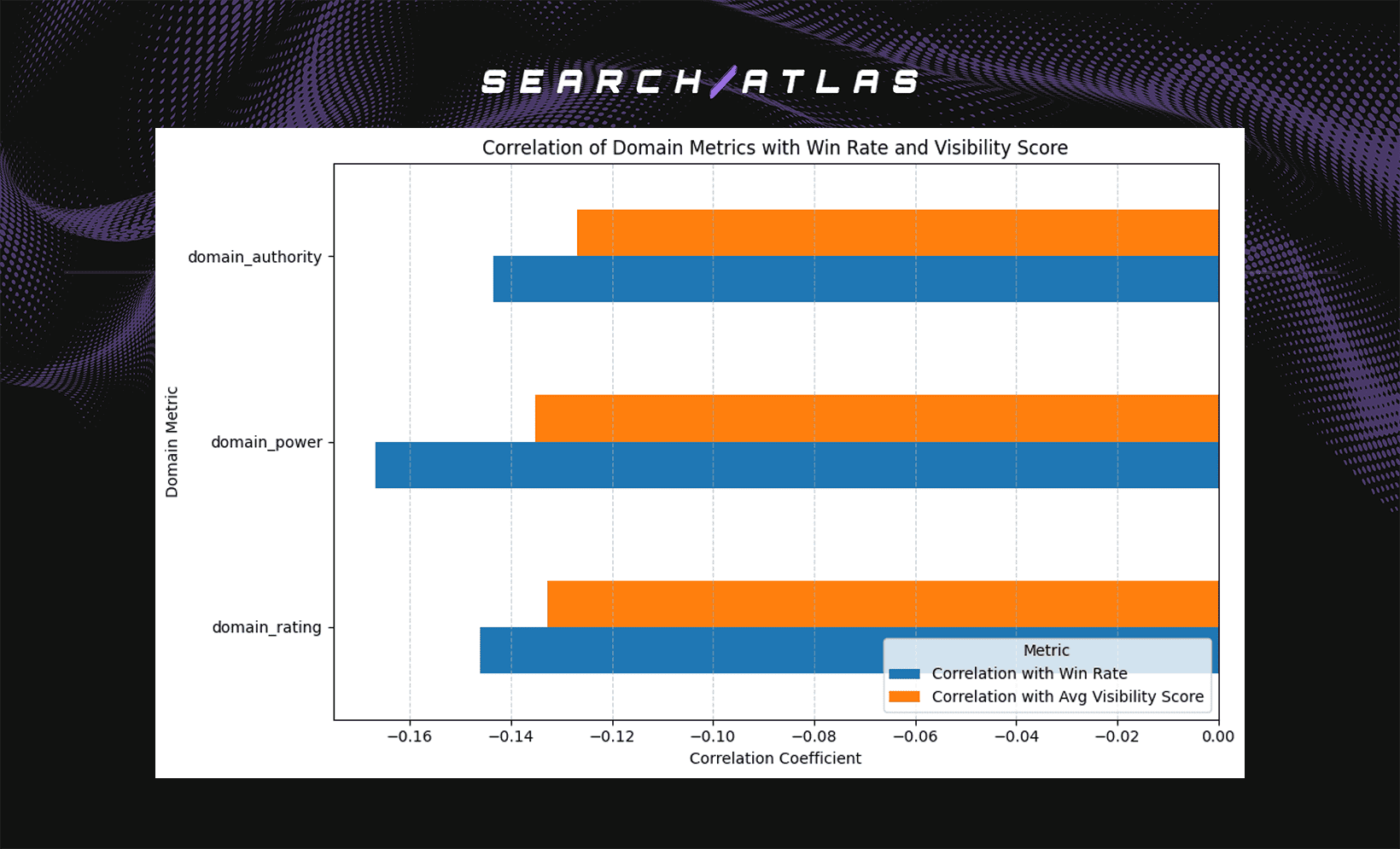
Example:

- Youtube

This analysis covers 21,767 unique domains with available DR, DP, and DA metrics.
Distribution of LLM Visibility by Domain Metrics
Below are box plots showing the distribution of LLM Visibility by Domain Rating, Domain Power, and Domain Authority.
Domain Power
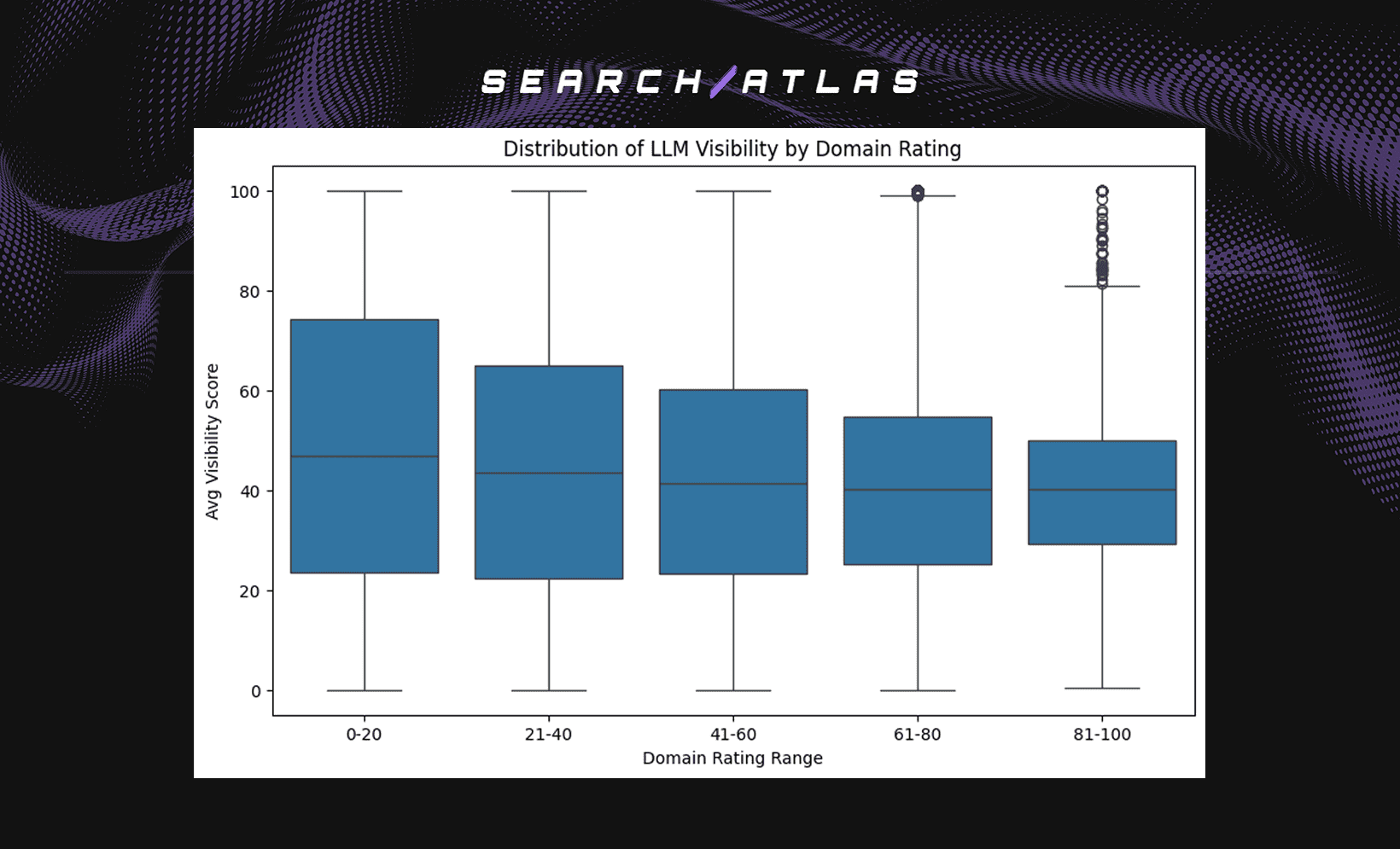
Domain Rating

Domain Authority
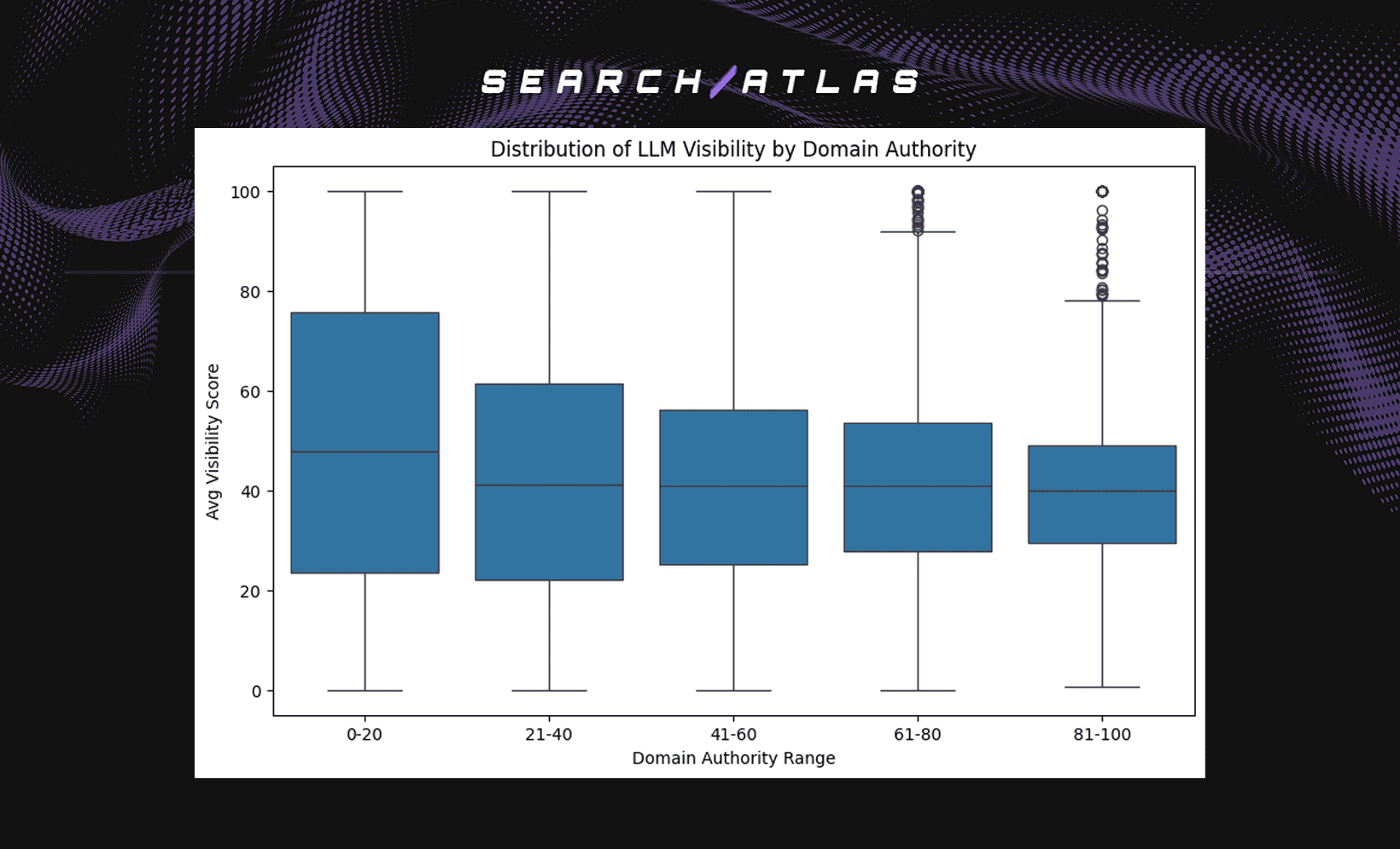
Correlation Between Domain Metrics and LLM Visibility
Below are scatter plots showing the relationship between Domain Power (DP), Domain Authority (DA), Domain Rating (DR), and LLM Visibility.
Domain Power: (OpenAI | Perplexity | Gemini)
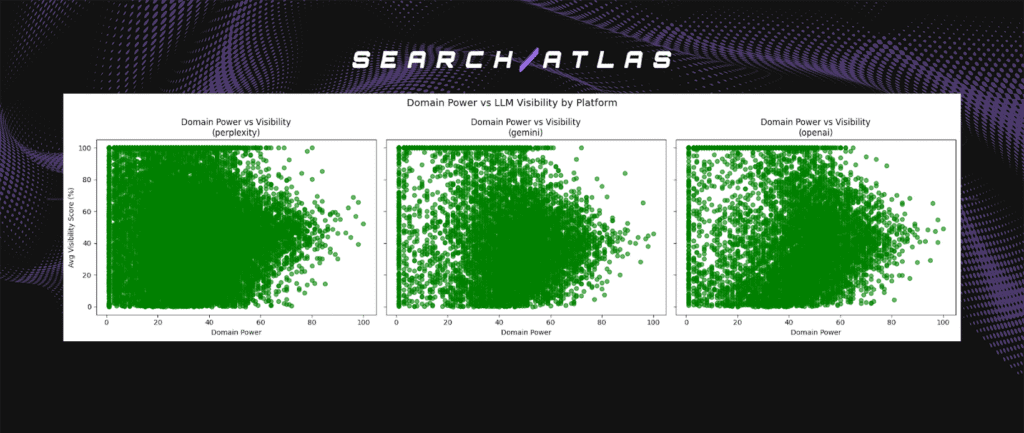
Domain Rating: (OpenAI | Perplexity | Gemini)
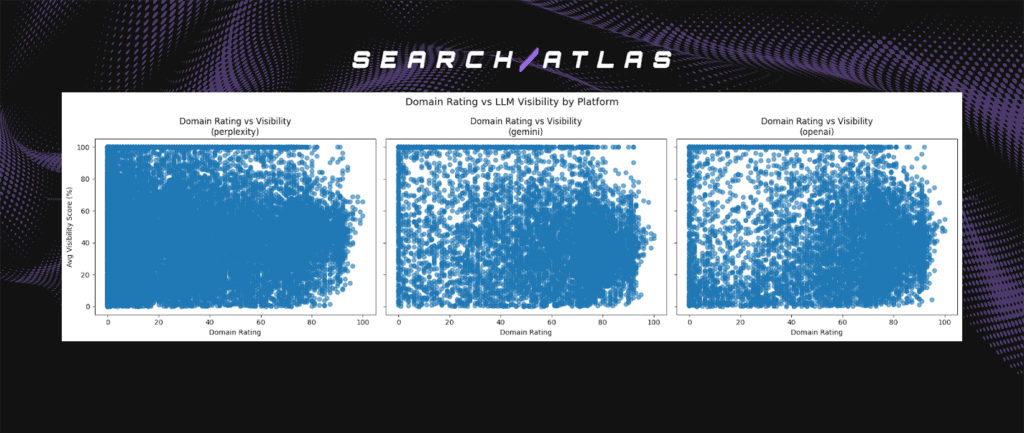
Domain Authority: (OpenAI | Perplexity | Gemini)
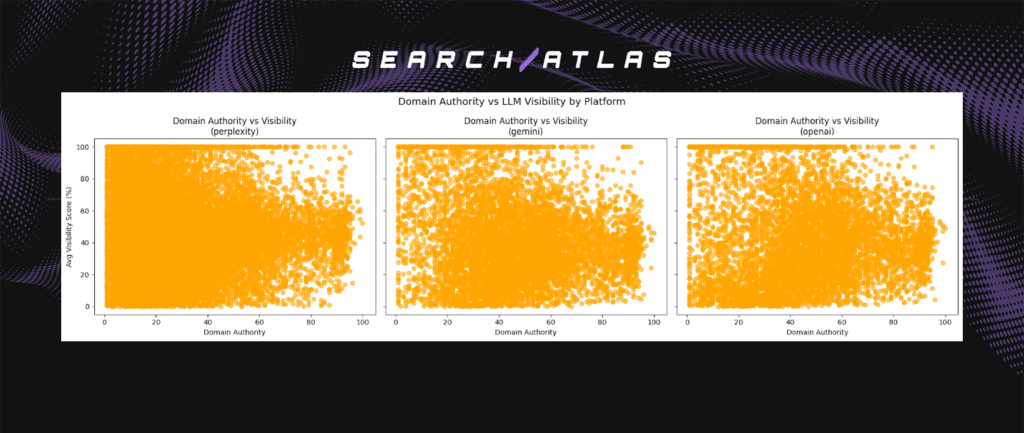
Key Insights:
All three metrics (Domain Rating, Domain Power and Domain Authority) show a weak negative correlation with the average visibility score. This shows LLM Visibility is not strongly authority-driven.
Finally, this suggests that LLMs may be leveling the playing field by giving smaller or lower-authority domains a chance to surface alongside established sites.
Does Lower Co-Mention Domain Frequency Count Lead to Higher Visibility in LLM Responses?
We analyzed a dataset containing 368,972 unique domains that were assigned a visibility score between 50% and 100% in large language model (LLM) responses.
To investigate whether high visibility correlates with the number of co-mentioned domains (i.e., domain-level competition within the same response), we grouped responses into tiers based on how many domains were mentioned.
Below is a chart showing the distribution of visibility scores by the number of domains mentioned in each response.
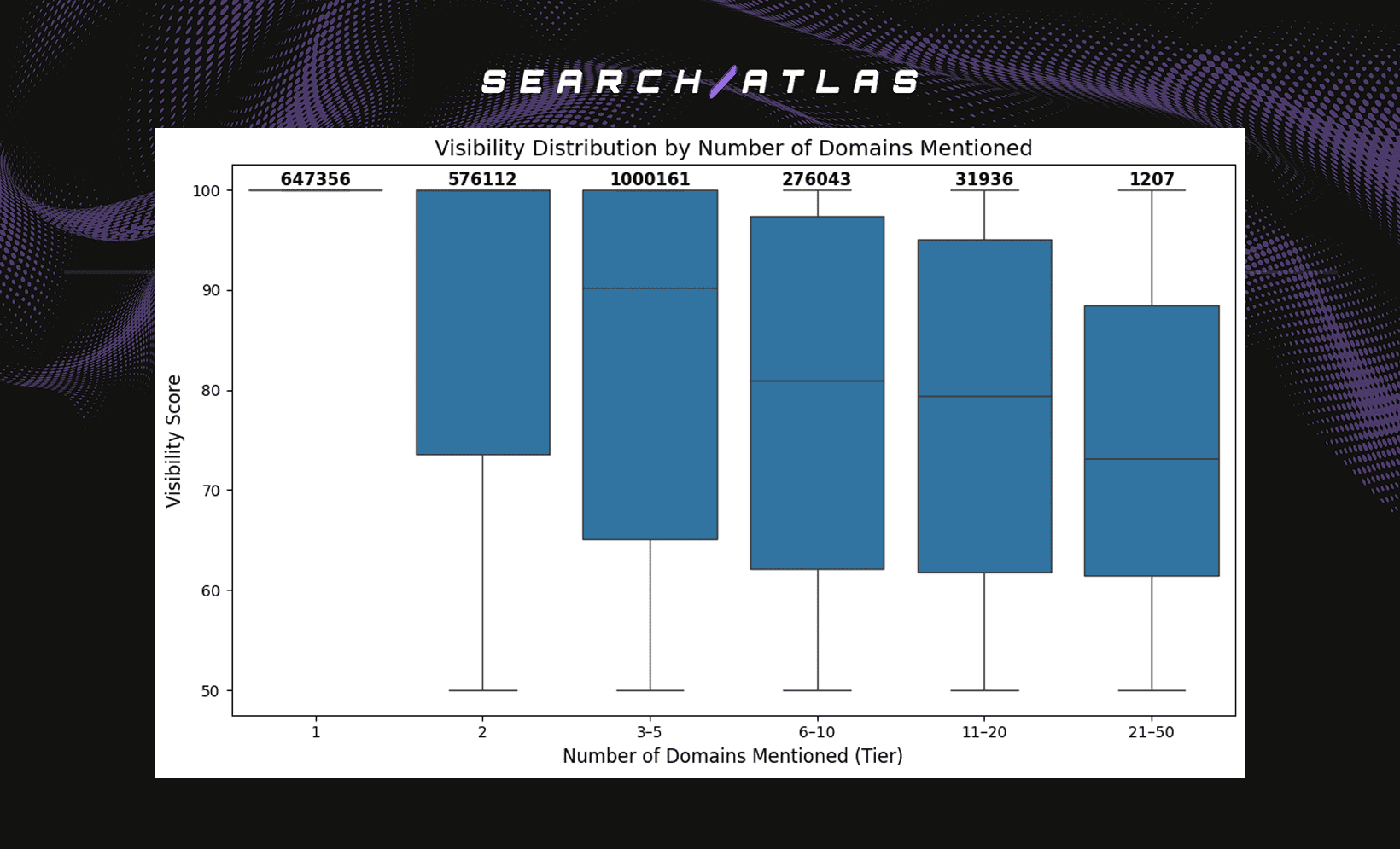
From the chart, we can see that:
Visibility scores generally decrease as the number of co-mentioned domains increases.
Responses mentioning fewer domains (one or two) achieve consistently higher visibility, while those competing with many other domains (six or more) show greater variation and noticeably lower median visibility.
Case Studies ( Youtube and Google ):
We examined examples where these domains (YouTube and Google) received 100% visibility to understand the types of queries that led to such high exposure. We also explored cases where they had 0% visibility to compare the nature of those queries.
For Google, we filtered the data to include only rows where the domain was google.com, and then sorted by the number of co-mentioned domains (i.e., responses_competed_in).
Top 10 queries where Google had 100% visibility
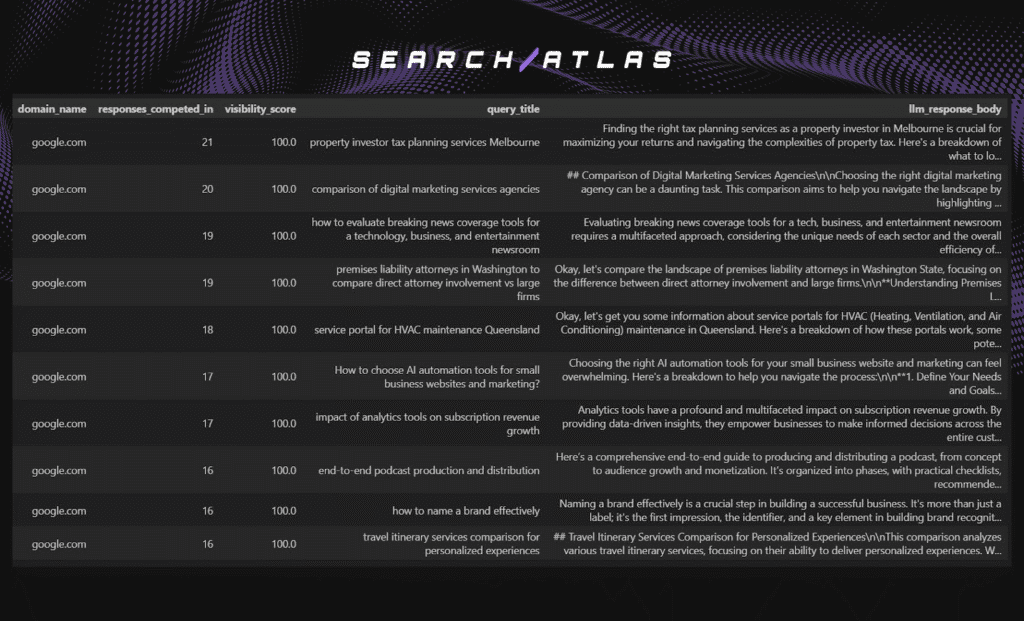
10 Google Queries Where Visibility Score = 0%

For YouTube, we also filtered the data to include only rows where the domain was youtube.com, and then sorted them by the number of co-mentioned domains (i.e., responses_competed_in).
Top 10 queries where Youtube had 100% visibility

10 Youtube Queries Where Visibility Score = 0%
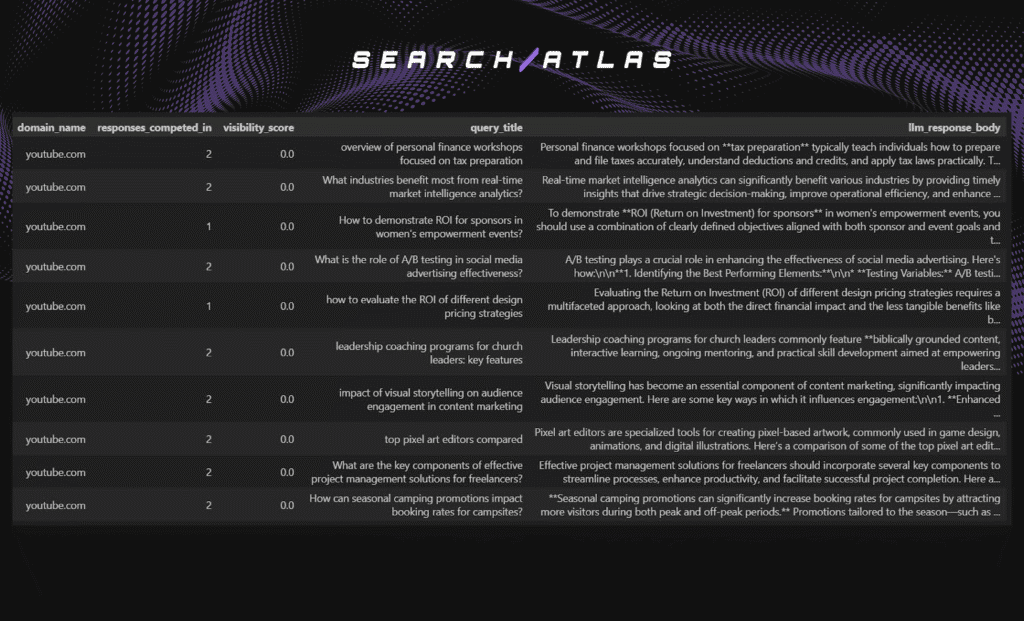
Distribution of Google & Youtube Visibility Scores by Domain Competition Tiers
We analyzed how competition within LLM responses influences domain visibility for Google and YouTube.
Each box plot shows the distribution of visibility scores across different tiers of domain competition, defined by the number of domains mentioned together in the same response.
This analysis uses samples where visibility scores ranged between 50% and 100%, ensuring that only meaningful appearances were considered.
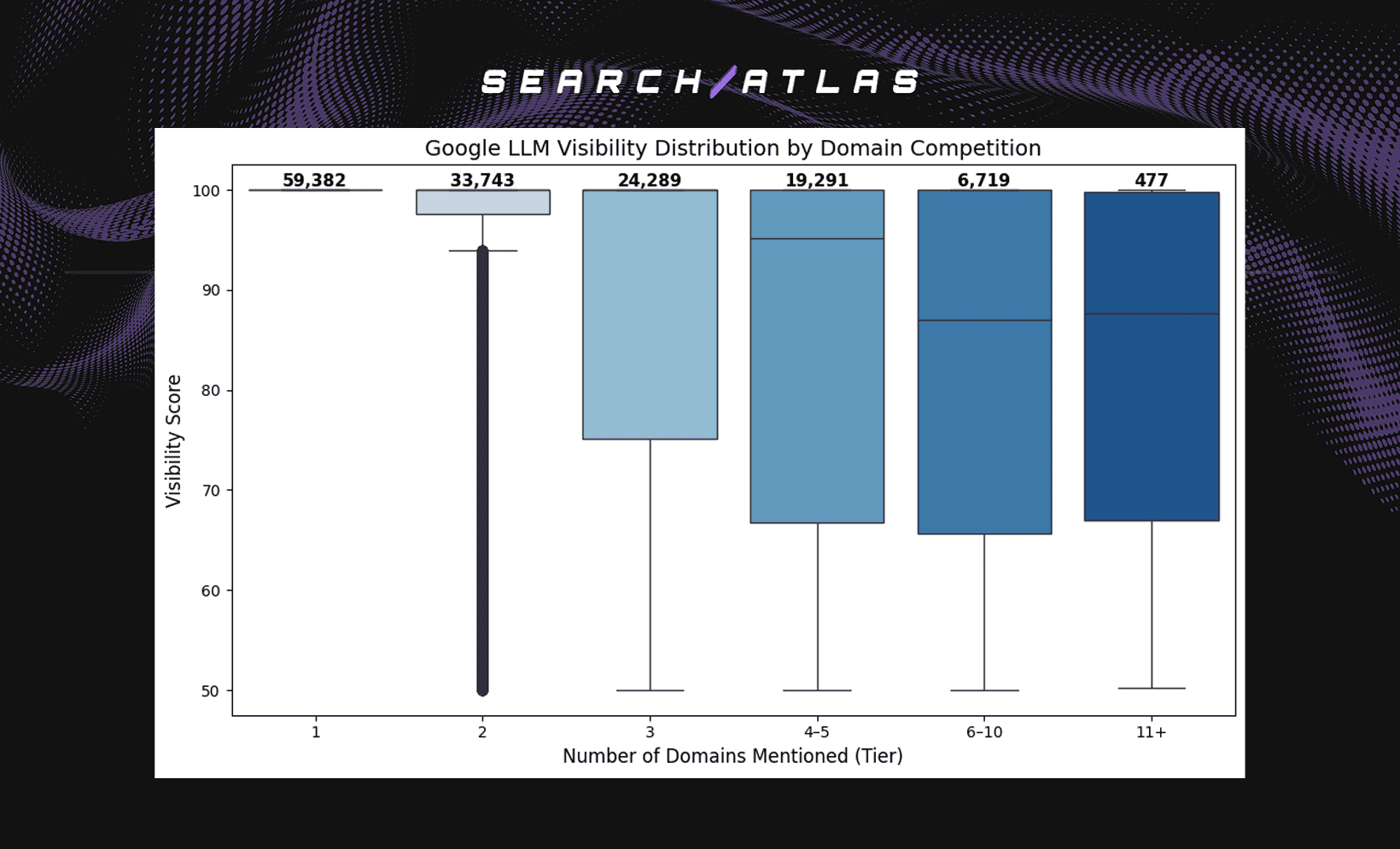
Key Insights
- Google holds near-perfect visibility (~100%) when it’s the only domain cited.
- High and stable visibility across low competition tiers (2–5 domains), showing continued preference when few domains appear.
- Gradual decline begins around 6–10 domains, indicating visibility weakens as LLMs diversify sources.
- In highly competitive contexts (11+ domains), visibility varies widely but the median rises again, indicating Google often maintains strong presence even in highly competitive responses.
Youtube
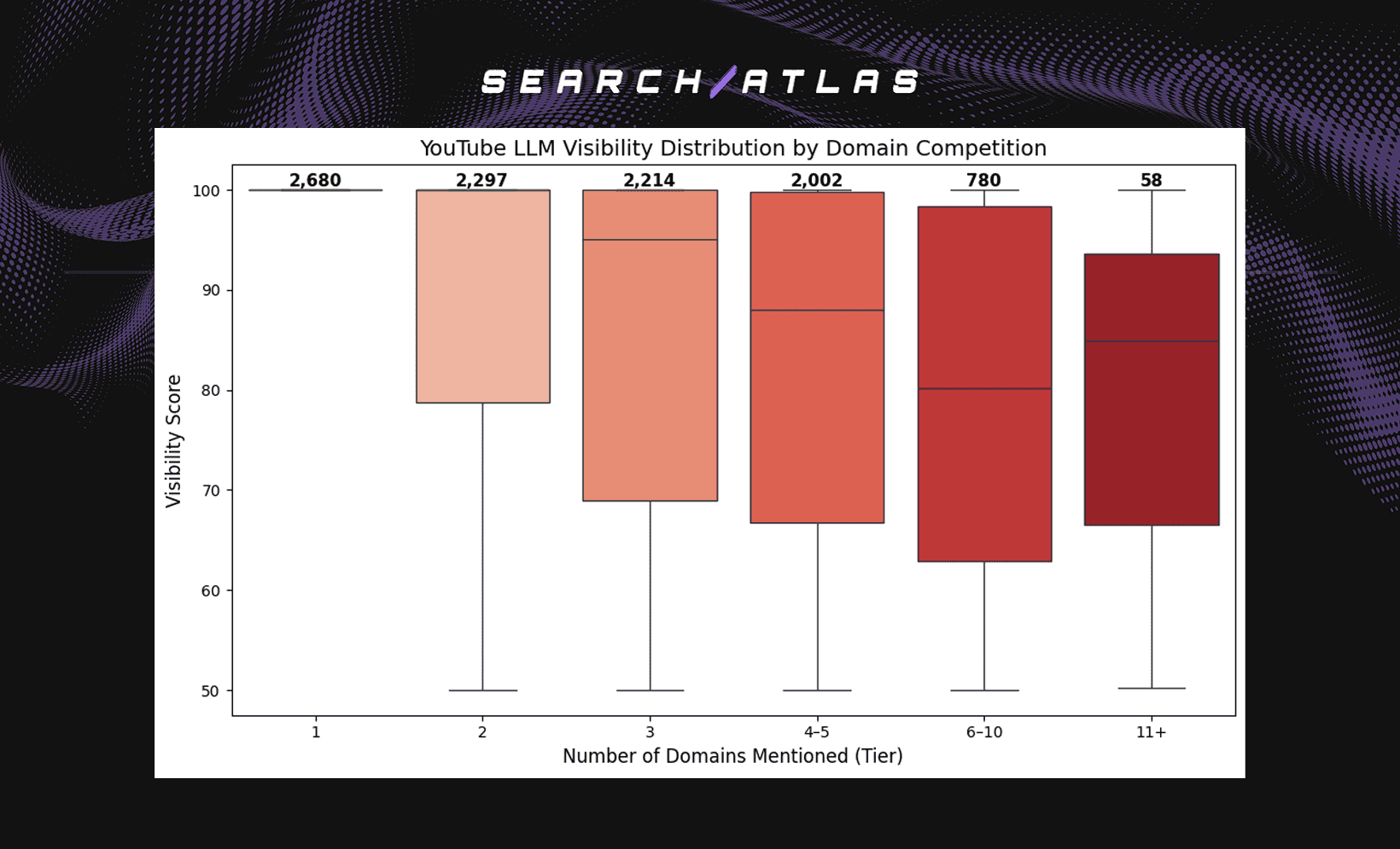
Key Insights
- YouTube achieves 100% visibility when it’s the only cited domain, highlighting its authority in single-domain contexts.
- It maintains very high visibility (90–100%) across low to mid competition levels (1–5 domains), showing strong consistency.
- As competition grows (6–10 domains), visibility variance increases, reflecting broader competition but steady participation.
- Even under high competition (11+ domains), YouTube sustains a median visibility near 80%, showing resilience and persistent inclusion in diverse responses.
Conclusion
This analysis shows that traditional SEO authority metrics such as Domain Power, Domain Rating, and Domain Authority do not strongly determine how often domains are surfaced in large language model outputs. The correlations between these authority measures and domain prominence were weakly negative, indicating that higher-rated sites do not necessarily gain greater exposure in AI-generated results.
Overall, the findings suggest that large language models may be reshaping online visibility by reducing dependence on traditional SEO hierarchies. Instead of consistently favoring dominant domains, they often highlight smaller or emerging sites when their content is contextually relevant and informative. This points to a more balanced, relevance-driven discovery landscape in the evolving AI search ecosystem.


